Around three months ago, driving around New Delhi, you’d have seen billboards welcoming U.S. Vice President JD Vance and advertising for a new Trump property in the suburbs. According to a spring 2025 Pew poll, India was one of the few countries globally where U.S. favorability remained positive, and one of only five countries where a majority of respondents had confidence in U.S. President Donald Trump.
These days, however, the only constant is volatility—in U.S.-India ties, too. Functional cooperation has continued, but the relationship has been rockier. Trump’s announcement that the United States will impose 50% tariffs on India now threatens to derail it. This has resulted in significant public backlash in India. It has also led to bafflement among former American policymakers about the counterproductive targeting of a partner.
This is one of the most challenging moments for the relationship since 1998. Then, the Indian nuclear tests, subsequent U.S. sanctions, and joint Sino-American criticism of India represented a nadir. Today, there are not just divergences on Pakistan, Russia, and trade, but also trickier personal, political, and strategic headwinds. These headwinds can be tackled—they have been before, including in the first Trump term—but it won’t be easy.
Tricky times
There have been serious U.S.-India differences even after the countries reset ties in 1999-2000. In the Bush administration, there was U.S. security assistance to Pakistan, and India’s ties with Iran. In the Obama years, there was the arrest of an Indian diplomat, Sino-U.S. engagement, and multilateral divergences on trade and climate change. In the Biden administration, there were differences over the Russian invasion of Ukraine and allegations of an Indian government employee’s involvement in a murder-for-hire plot on American soil.
During the first Trump administration, there were sanctions on Iran, Russia, and Venezuela that affected India. The president also criticized Indian tariffs and took adverse trade actions, mocked Indian contributions in Afghanistan and called India “filthy,” reportedly imitated Prime Minister Narendra Modi’s accent, hosted a Pakistani leader months after an India-Pakistan crisis (where he previewed a ceasefire before the countries announced it), struck a deal with the Taliban (then aligned with Pakistan), offered to mediate between India and Pakistan (and India and China), and sought agreements with Beijing that worried New Delhi.
The current moment’s elements of friction were predictable—and were indeed anticipated—apart, perhaps, from the Pakistan factor reemerging. But the challenge is that they have almost simultaneously broken in a bad direction for India-U.S. ties.
The president is not alone in being frustrated with India’s tariffs and business environment. And his desire for a big deal might be clashing with New Delhi’s preference for phase-by-phase ones. But Indians have felt blindsided by Trump’s tariff announcement, given the ongoing negotiations. There has been confusion about the reason outlined—Indian imports of Russian oil—given the U.S. price cap policy permitting imports, China not being targeted, and continuing American and European imports of Russian products. And there has been anger about the president dismissing India as having a “dead economy.”
Also on the economic front, there has been the clash between friendshoring and reshoring. Trump has criticized American companies for investing in India as part of their diversification or China-plus-one strategies—a shift away from U.S. policy encouraging them to do so.
Then there have been the differences over partnerships with each other’s rivals. Trump has expressed annoyance about the BRICS grouping and India’s partnership with Russia. His tariffs on India might be designed to bring Russian President Vladimir Putin to the table, but in New Delhi, it is perceived as impinging on India’s right to make foreign policy choices. It is also seen as odd given Trump’s own outreach to Russia.
India, in turn, has been dismayed by U.S.-Pakistan ties. It perceives Trump as equating India and Pakistan after the recent crisis sparked by a terrorist attack in India, and is upset by Trump hosting Pakistan’s chief of army staff, who regularly lobs threats against India. Islamabad, as it did in the early 1950s, 1971, 1979, and then 2001, has made itself useful to an American president’s priorities (today to include counterterrorism, crypto, critical minerals, Trump’s quest for a Nobel Peace Prize, and offering diplomatic help with Iran, China, and Central Asian countries). Whatever Trump’s reasons for a Pakistan reset, the administration’s approach is seen as adversely affecting India’s security and as designed to pressure India.
Complicating conditions
Trade, Russia, and Pakistan are not new U.S.-India headaches, but what makes this moment additionally tricky are overarching personal, political, and strategic factors.
Strategically, there’s currently a missing element: convergence on China. Shared views of the challenges posed by an assertive China have fueled cooperation between the two countries—and, crucially, incentivized New Delhi and Washington to manage their differences. Within the Trump administration, however, there isn’t a consensus or even a dominant view on China. The president himself wants a deal with Xi Jinping. A U.S.-China détente, even if temporary, independently poses problems for India. It also means that China competition hasn’t provided the motivation that it has in the past to keep India ties steady or manage differences.
Then there’s the new element: Trump’s personal pique vis-à-vis India. Trump seems miffed that New Delhi, in contrast to Islamabad, has contradicted his claims that he averted nuclear war between India and Pakistan using the threat of tariffs. And the president’s negative mood might have opened the door to India critics in the U.S. government to press their cases against Indian tariffs, Russia ties, or immigration—and made supporters of the India-U.S. ties less vocal.
Trump targeting India, in turn, has further fueled the skepticism of America that dominates among the Indian strategic elite outside government. More significantly, the souring public mood has narrowed Modi’s domestic political space to do more with the United States (this had already been adversely affected by accusations that he’d agreed to a ceasefire with Pakistan under U.S. pressure). The current tensions have also likely weakened the case of those within government advocating for closer ties with the United States (since it has reinforced doubts about U.S. reliability and intentions). It might even have strengthened the hands of those arguing for more engagement with Beijing and Moscow instead.
Critical consequences
If the downward spiral continues, there could be more far-reaching consequences for the painstakingly built India-U.S. partnership. This is neither a dispensable relationship, as some in India have argued, nor an altruistic one, as some in the United States have. Both sides have invested in what is a high-maintenance partnership for a pragmatic reason: each side has seen the other as useful to its own priorities. That has led to active cooperation and, at other times, holding fire against each other. Both could be reversed.
Beyond bilateral relations, a free fall in ties will complicate both countries’ strategic environment and global negotiating hand. Those in India calling for New Delhi to jettison ties with the United States and turn just to Russia and China ignore certain realities—and not just about India’s economic or technology interests vis-à-vis the United States. Russia has limitations as an economic and technology partner, given its own trajectory and dependence on China. And even if India changes tack on the latter and somehow ignores all the reasons for Sino-Indian rivalry, New Delhi would go into any negotiation with Beijing with a weaker hand if its partnership with the United States deteriorates.
As for the United States, an autonomous India, aligned with Washington on certain key priorities, has been helpful for the balance of power in the Indo-Pacific, keeping BRICS from becoming the anti-West organization Beijing and Moscow want it to be, and for American companies’ supply chains and bottom lines. A diffident New Delhi, on the other hand, can be a significant thorn in Washington’s side and will seek to do less—not more—business with the United States. The continued targeting of an India that seeks not just security and prosperity, but respect and autonomy will result in just that outcome.
Potential pathways for the partnership
A negative turn could result from or lead to a series of steps, including: additional American tariffs, Indian retaliation, the United States restarting the supply of certain military equipment to Pakistan, more American pressure on India’s Russia relationship if Trump’s frustration with Putin grows, restrictions on U.S. work visas that benefit Indians, Indian consumer boycotts or the targeting of American companies, New Delhi canceling defense or other deals with the United States, India signing on to anti-American statements at the upcoming Shanghai Cooperation Organization summit, the cancelation of the Quad summit, or Beijing offering New Delhi or Washington a more favorable deal.
However, the relationship could return to a safer route. If Trump feels like he got what he wants from his current approach—whether from India or Russia—or if he moves on to another issue, or if conditions change with respect to China, Russia, or U.S. commercial interests, he may come to see India in a different light. Additionally or alternatively, India could again play the long game: reiterating its foreign policy autonomy and not conceding on sensitive issues or sectors, while offering more—whether on tariffs, purchases, investments, the business environment, Russian oil imports, or flattery.
It’s not clear which direction the partnership will take. The second path would need both sides to feel they have achieved something they can sell as a win. But it would also require recognizing what is not possible; for instance, India will not sit down with Pakistan at America’s behest, and Trump will not cease his verbal volleys. That would be expecting India not to be India and Trump not to be Trump—a fruitless endeavor.
The Brookings Institution is committed to quality, independence, and impact.
We are supported by a diverse array of funders. In line with our values and policies, each Brookings publication represents the sole views of its author(s).
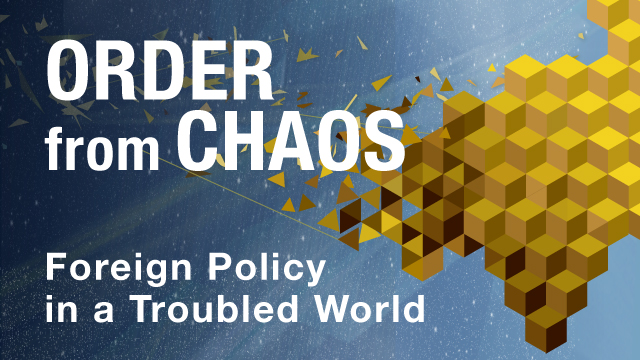

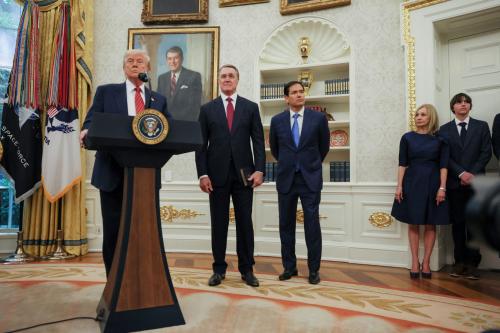
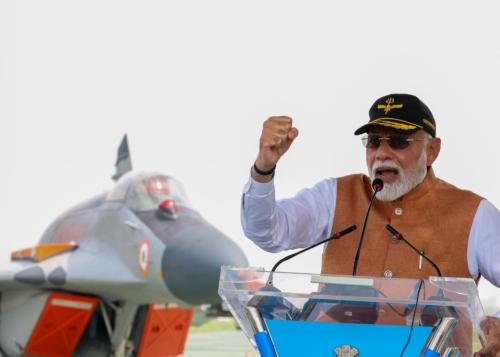
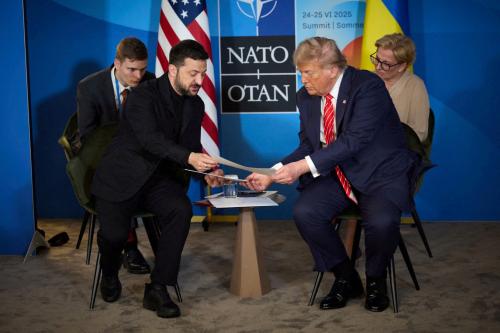
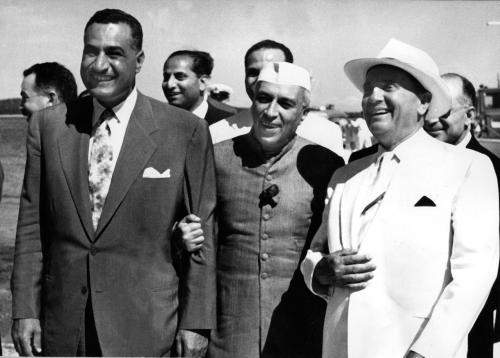
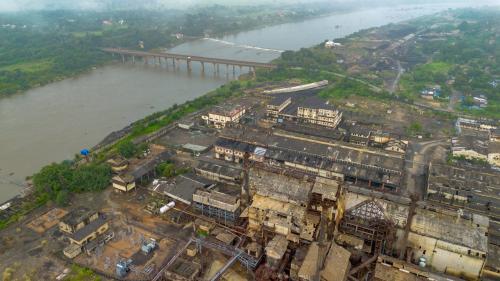

Commentary
A challenging moment for the US-India relationship
August 13, 2025